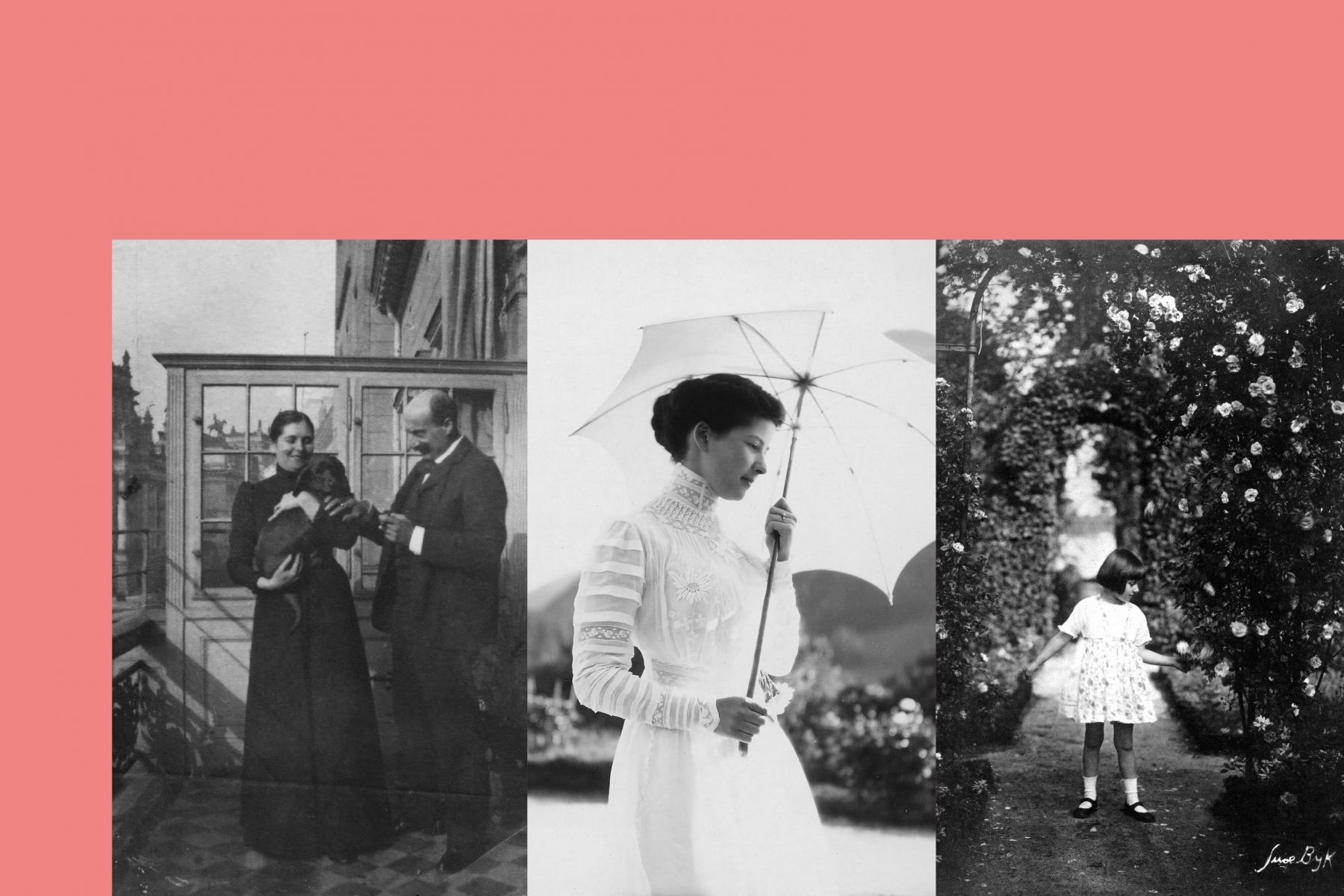
In Focus. Martha, Käthe and Maria
Listen to the stories of specific exhibits from the special exhibition “In Focus. Martha, Käthe and Maria” and learn more about the three unique women and the history of the Liebermann family.
Please find the English wall texts below.
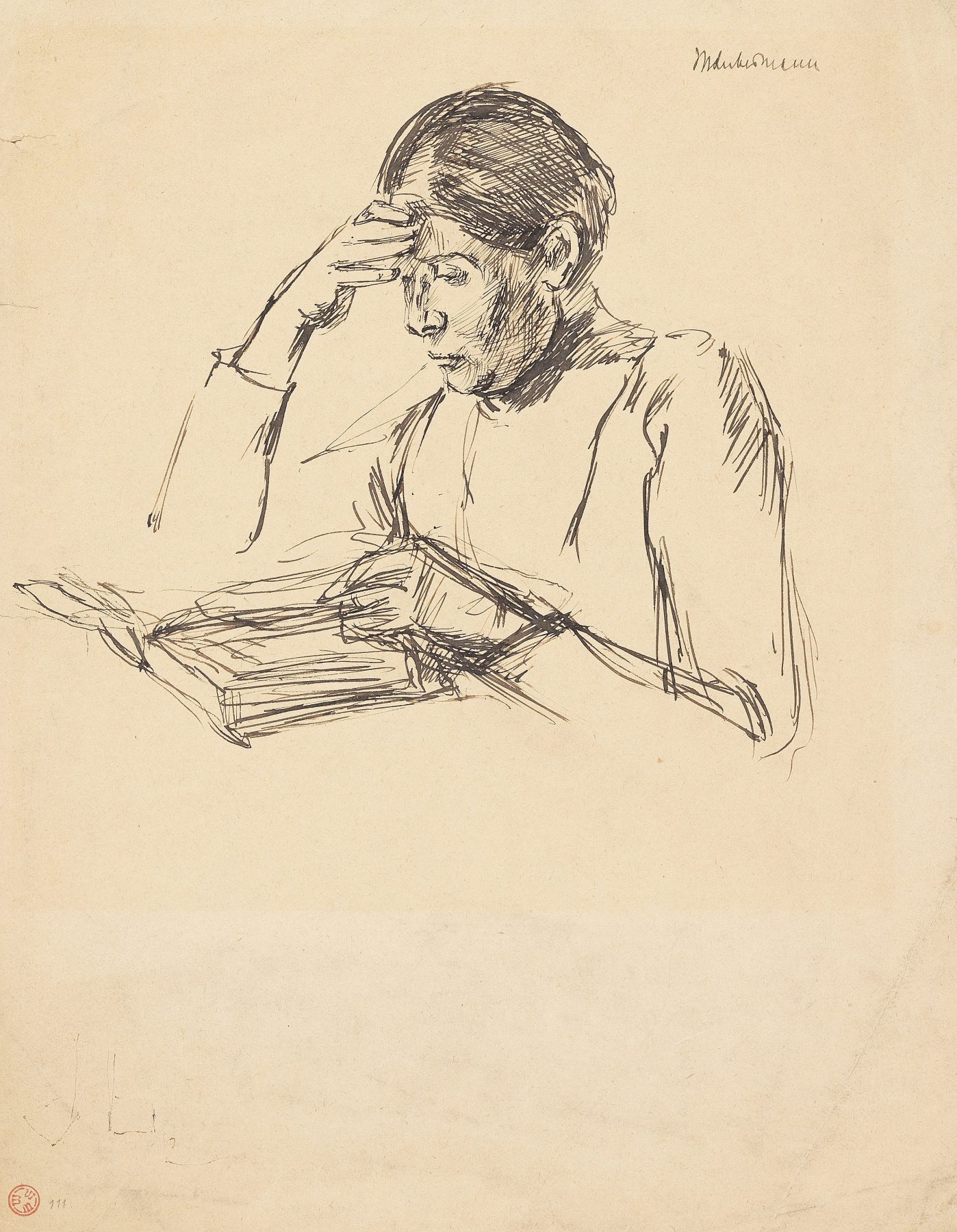
Martha
Martha Liebermann was a distinguished, admired woman. She was the lady of the house and appeared to be charismatic and resolute – she knew how to assert herself.
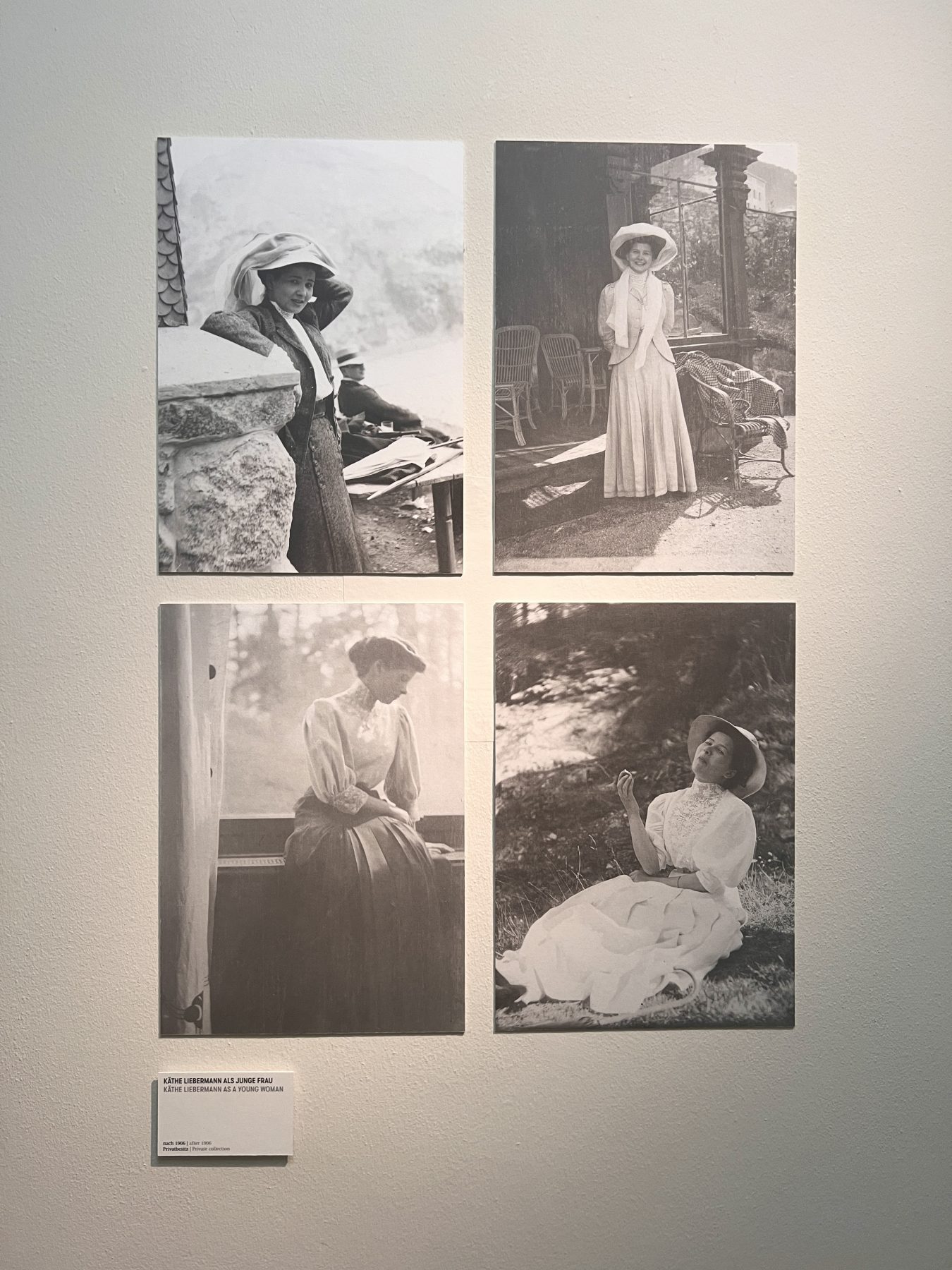
Käthe
Käthe Liebermann, the only daughter of Martha and Max, was very close to her parents. The family often went on trips. Some photos that Grete Ring presumably took of Käthe can be seen in this room.
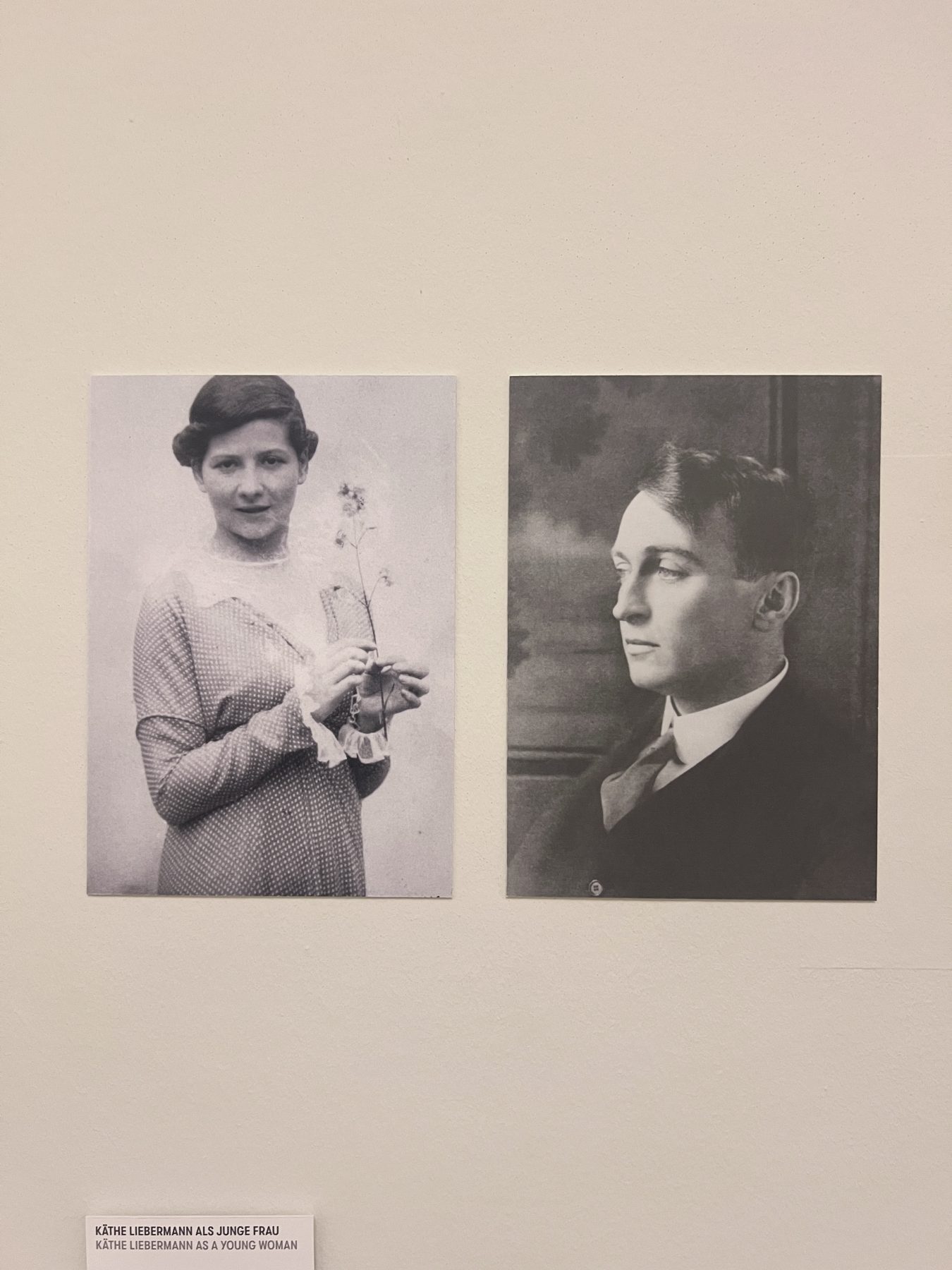
Kurt Riezler and his career in Germany
Kurt Riezler, Käthe’s husband and Maria’s father, was an academic and taught at the University of Frankfurt from 1928. The family left the country after the November progroms of 1938. More information about the Riezler family’s time in exile can be found in the last room of this exhibition.
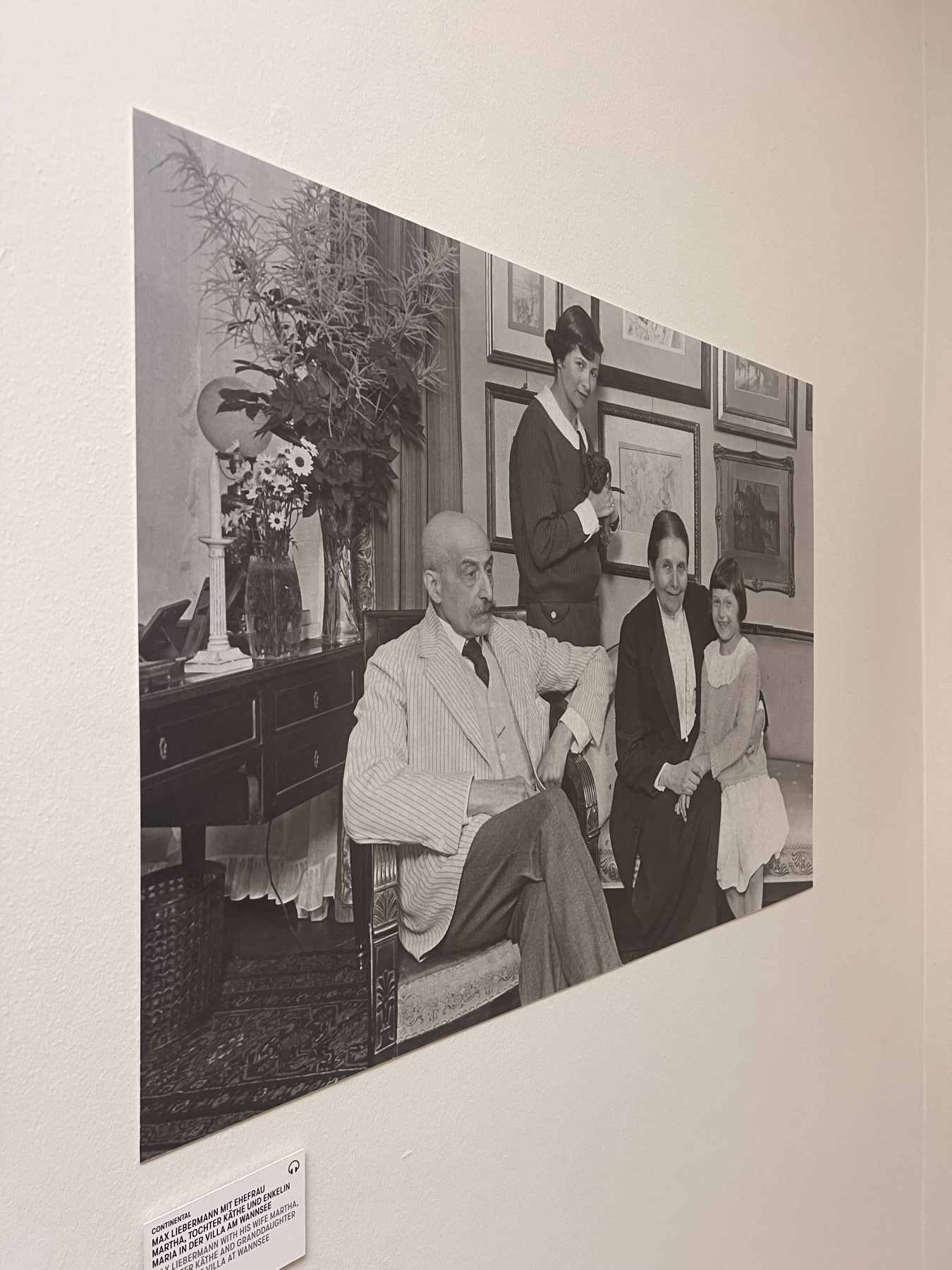
Photographs of the Liebermann Family
The famous painter’s family was often photographed. Countless prints exist, many of which are kept in the Ullstein picture archive in Berlin.
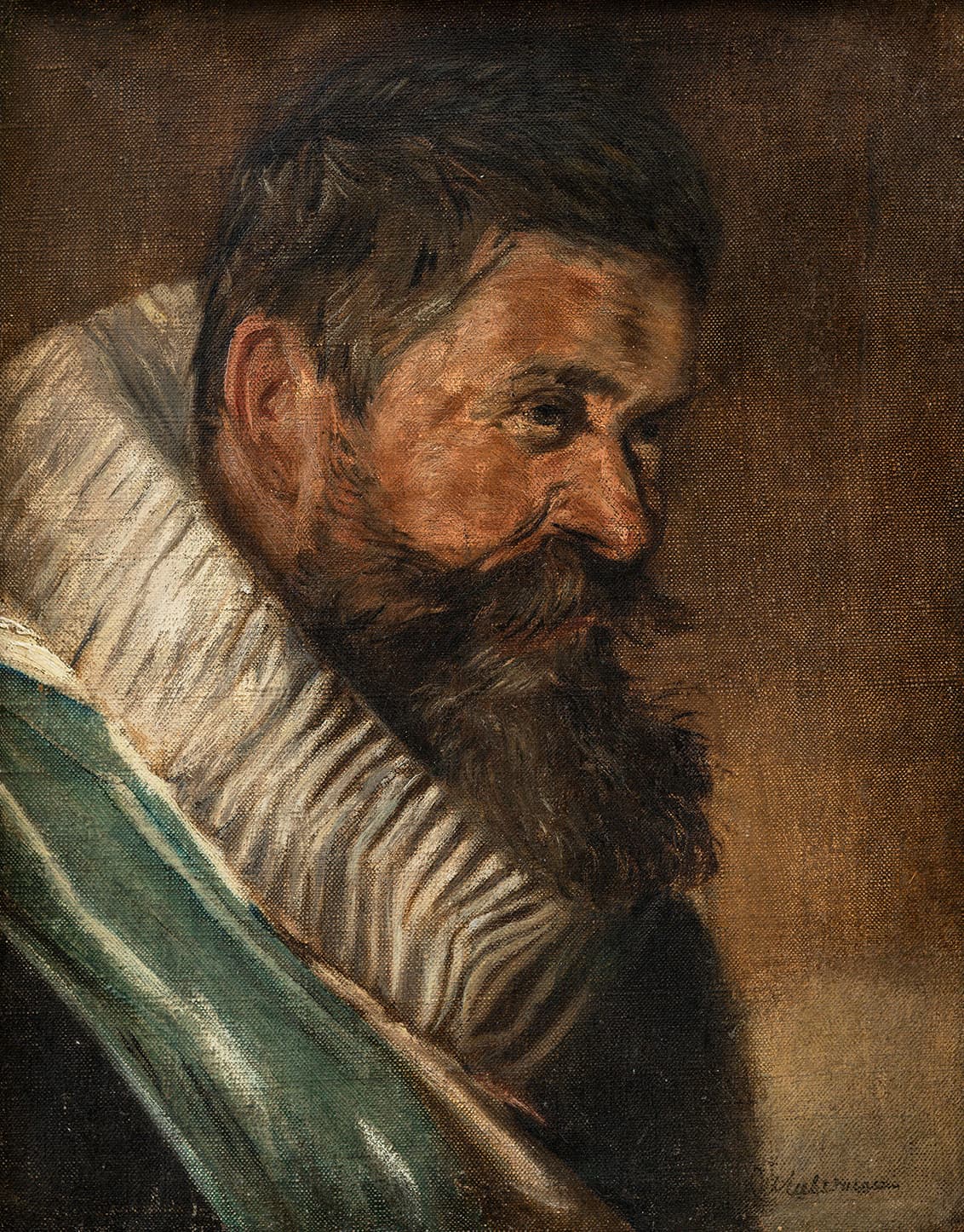
The History of a Painting
New findings from our provenance research reveal previously unknown details about the journey of the painting “Head of a St Adrian’s Archer from 1627, copy after Frans Hals”.
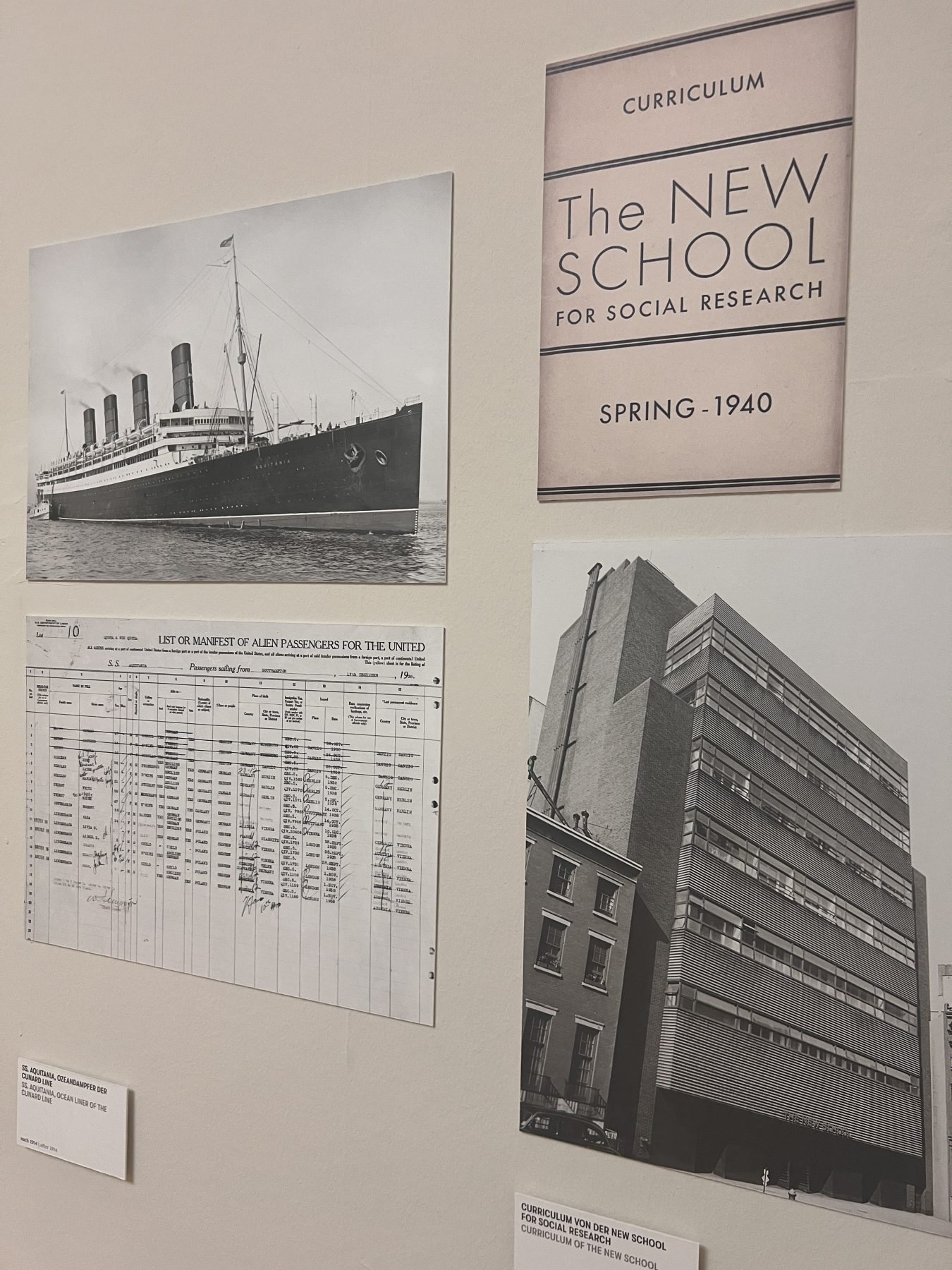
The New School in New York
Kurt Riezler had accepted a call to the New School of Social Research in New York. From 1933, the university was able to offer employment to many emigré academics from German-speaking countries.
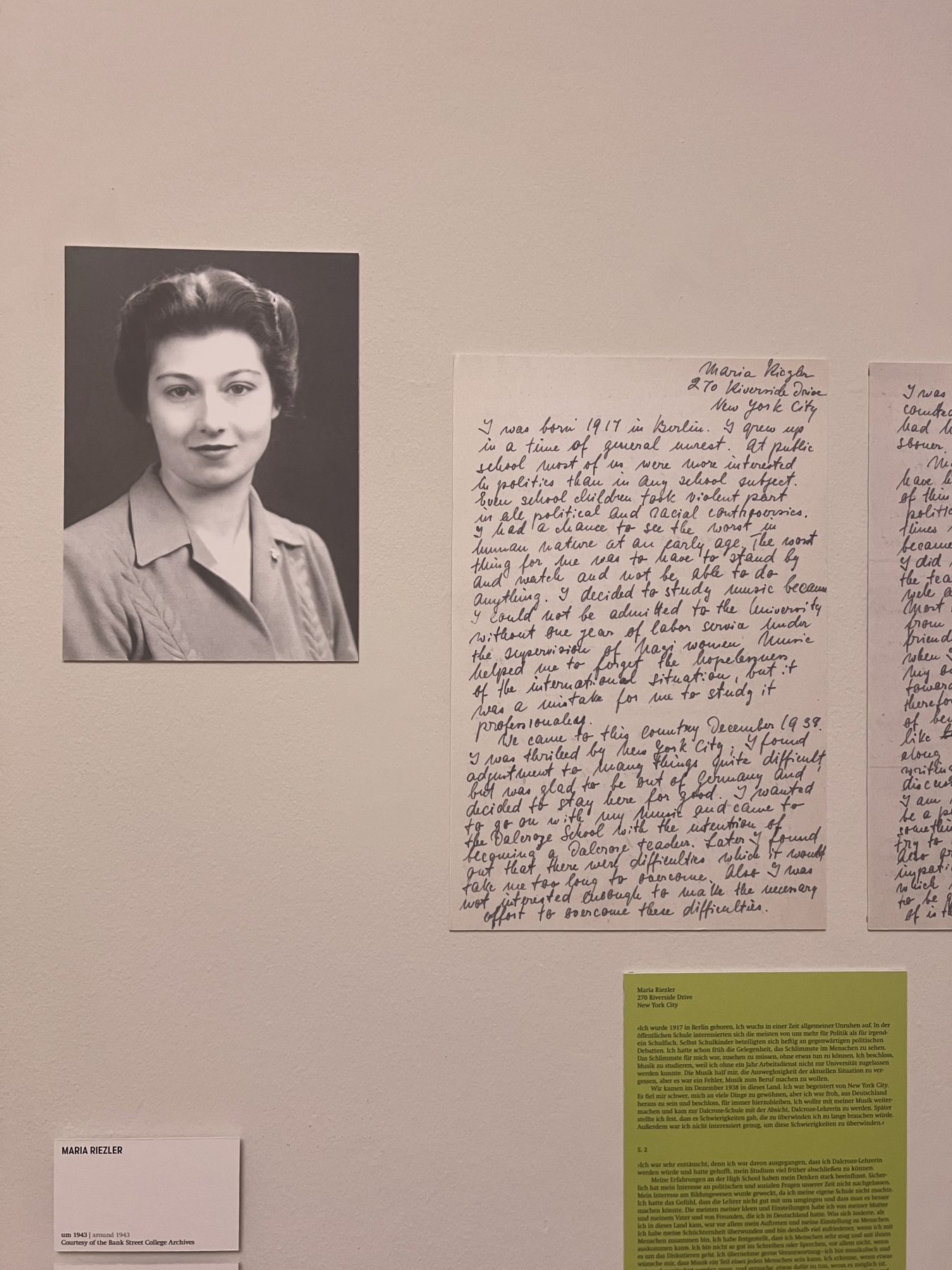
Memories of Maria
Maria’s daughter Katharine Whild recalls memories of her mother.
ENGLISH WALL TEXTS
In Focus. Martha, Käthe and Maria
The Women of the Liebermann Family
“My ladies”: this is what the painter Max Liebermann (1847 – 1935) affectionately called the three women in his closest family. He married Martha (1857 – 1943) in 1884 and they had one child, a daughter, Käthe (1885 – 1952). Their only grandchild, Maria (1917 – 1995), was born in 1917.
In this exhibition we present the three ladies of the Liebermann family in more detail. With artworks from our collection, information from literature, correspondence and newly discovered sources, we attempt to put Martha, Käthe and Maria in the spotlight.
What do we know about them? How were they portrayed by Max Liebermann? And what fate befell them after Max Liebermann’s death in 1935?
Martha
Martha Marckwald was born in Berlin on 8 October 1857. The Marckwald and Liebermann families had been close for some time – after the death of Martha’s father in 1870, Max Liebermann’s father, Louis Liebermann, took over the guardianship of the Marckwald children. Martha had three sisters and a brother. According to the writer and art collector Julius Elias, the Marckwald daughters were “very beautiful and ladies of the world who liked to be admired […] romantic in nature, a little passive, somewhat relaxed about the course of events.” Max and Martha had known each other since their youth. In 1873, Martha’s sister Elsbeth married Georg Liebermann, Max’s brother. On 14 September 1884, Max and Martha married at the registry office in Berlin-Tiergarten. They moved into their first flat together at Beethovenstraße 6, and their honeymoon took them to Holland. In the mid-1890s, they took over Liebermann’s parents’ house on Pariser Platz. From 1909, the couple built a summer residence on Lake Wannsee, today’s Liebermann Villa. In Liebermann’s depictions of Martha, she often appears somewhat passive, introverted and concentrated. Martha complained about always being presented in this way, as she once commented “one must think [I] am an unattractive and decrepit person, because one almost always sees [me] lying here, mostly sleeping, or at most reading”. Reports from the time confirm that Martha knew how to assert herself. She was interested in theatre, was involved in charitable causes and maintained many close friendships.
Family in the Art of Max Liebermann
The family was an important motif for Max Liebermann. He constantly drew and painted his wife, daughter and granddaughter. In this room, the portrait from 1926 shows the whole family together. They are seated around a round table in the fireplace room on the ground floor of the Liebermann Villa. In the centre, Max is wearing a white painting smock and drawing in a sketchbook. On the right, Martha, dressed in black, leans back in an armchair. Her 9-year-old granddaughter Maria is reading a book next to her. Käthe is sitting at the table with her dachshund on her lap. On the left, Käthe’s husband, Kurt Riezler (1882 – 1955), is leaning on a chair. The Liebermann family maid steps out of the dining room.
The Liebermann women often appear as figures in the artist’s famous garden paintings. The painting “Birches on the Bank of Lake Wannsee”, for example, was painted in 1924, when Käthe was 39 years old and her daughter Maria was seven. The figures strolling along the edge of the lake are probably Käthe and Maria.
Käthe
On 19 August 1885, the only child of Max and Martha Liebermann was born at the Charité hospital in Berlin – Käthe Marianne Henriette Liebermann. The pregnancy was not easy for Martha, and the birth did not go smoothly, as Max reported to a friend shortly afterwards: “I didn’t live the last few weeks: after three days and just as many nights, in incredible pain […] the little one finally arrived”. Käthe often suffered from a severe cough as a child – the Liebermanns thus travelled a lot with their young daughter to escape the dust of the city, for example to Italy, Austria, France and Switzerland.
From the preserved correspondence we see that Käthe had a wide range of interests as a girl. She received private drawing lessons and enjoyed reading. She took dancing and riding lessons and was a great tennis player. She also organized balls and costume parties and was even allowed to use her father’s studio. In 1905 Käthe and her friends are said to have danced until two o’clock in the morning in the artist’s studio.
On 11 May 1915, Käthe Liebermann married the Munich-born politician and diplomat Kurt Karl Riezler at the registry office in Berlin-Mitte. Their daughter Maria was born in 1917. The Riezler family lived at Königin-Augusta-Straße 53a on the second floor. They often travelled by car to visit the grandparents at lake Wannsee. In 1928 Käthe, Kurt and Maria left Berlin and moved to Frankfurt am Main for work. Kurt Riezler became a curator and honorary professor of philosophy at the Frankfurt University.
The lost Portraits of Käthe Liebermann
In the course of his life, Max Liebermann painted numerous portraits of his daughter Käthe. These portraits were intended for the family and hung for many years in the houses on Wannsee and Pariser Platz. Photos from the time show how and where these works adorned the walls, for example in the fireplace room in the Liebermann villa next to an equestrian portrait by Edouard Manet, or in the dining room in the family’s city residence.
When Max Liebermann died in 1935, many of these portraits were still in the family’s possession. In the course of the 1930s, however, this changed. Both Max and Martha Liebermann came from Jewish families. From 1935 onwards Martha was gradually forced by the National Socialist regime to part from her property. After her death in 1943 what was left was confiscated and many of the portraits of Käthe have been lost ever since. More about the fate of the Liebermann family after 1935 can be found in the last room of this exhibition.
Maria
Two years after the wedding of Käthe and Kurt Riezler, their only child Maria Martha Margarethe Riezler was born on 27 March 1917. The granddaughter of Martha and Max was baptised catholic in Hedwig’s Cathedral, just like her father. She had three godmothers, one of whom was the art dealer Grete Ring (1887 – 1952), Käthe Riezler’s cousin.
Maria spent a lot of time with her grandparents on lake Wannsee. She loved playing in the garden with her grandmother, her mother or her nurse. Maria was spoilt by Max, Martha and their friends: once a friend of her grandparents sent her a doll, which she called Max and never let her out of her sight. When her parents were travelling, Max and Martha Liebermann looked after their granddaughter, even when she was a toddler. Through Liebermann’s pictures you can see Maria growing up – in a pram, playing in the sand pile, taking her first steps, with the dachshund on her lap or immersed in a picture book.
The tragic fate of Martha Liebermann
Max Liebermann died in Berlin on 8 February 1935 at the age of 87. He had witnessed the beginnings of the National Socialist regime in Berlin – in 1933 he resigned from his public office at the Academy of Arts.
In autumn 1935, Martha Liebermann was forced to leave the house at Pariser Platz and move into a smaller flat. In 1940, she was forced to sell her summer house on Wannsee to the German Reichspost. Acquaintances abroad attempted to obtain a visa for Martha, first for Sweden and later for Switzerland. After the November pogroms In 1938, Käthe, Kurt and Maria were able to flee to America. They also tried to organise a visa for Martha without success. In December 1941, with the US declaration of war on Germany, further correspondence between mother and daughter became impossible.
On 5 March 1943, at the age of 85, Martha Liebermann took an overdose of sleeping pills to avoid deportation to Theresienstadt. She died five days later in the Jewish Hospital in Berlin.
The Riezler family in Exile
In November 1938, Käthe, Kurt and Maria Riezler were able to leave Berlin. Kurt was offered a position as a professor at the New School for Social Research, a university founded in New York in 1919. Thanks to this offer of employment the family was allowed to leave Germany.
Passenger lists from the time show when the Riezler family arrived in the United States. They first travelled to Southampton in Southern England, to board the ocean liner SS. Aquitania of the Cunard Line to New York. The Aquitania was built in 1914 and had three passenger classes. The Riezler family travelled in the “Second Cabin”, i.e. second class and reached New York on 17 December 1938. Käthe and Kurt were 53 and 56 years old, their daughter Maria was 21 years old. In the passenger list, information about “Race or People” had to be given. Maria and her father were listed as “German”, while Käthe was listed as “Hebrew”.
The family settled in Manhattan, in an apartment at 270 Riverside Drive on the Upper West Side. They had been able to bring some things with them from Germany, including works of art, furniture, porcelain and crockery.
Maria in New York
1943, almost five years after her arrival in New York, the now 26-year-old Maria Riezler applied at Cooperative School for Teachers in Bank Street in New York. Her goal was to become a kindergarten teacher. Her application documents can be found today in the archives of the Bank Street College of Education. They offer a fascinating insight into the life of young Maria.
From the documents we see that Maria had graduated from high school in Berlin in 1936. She then began studying music in Berlin. In her application she wrote: “Music helped me to forget the hopelessness of the international situation”. In America, from 1940 to 1943, she was training to become a rhythmics teacher at a “Dalcroze School” – a school for rhythmic-musical education based on the theories of the Swiss Emile Jaques-Dalcroze. Here she gained her first experience of working with children.
Maria dropped out of the Dalcroze training programme, a decision she did not elaborate on. She only wrote “later I found out that there were difficulties which I would need too much time to overcome”. 1943 she listed her hobbies as music, playing the piano and singing in the singing in the choir, ballroom dancing, outdoor life, hiking, swimming, “arts and crafts” and “painting appreciation “.
Maria’s application to the Cooperative School was successful, and she studied there until 1944. Afterwards she took a position at a school in Long Island.
After the War
After the end of the Second World War, Käthe and Kurt Riezler remained in New York and were granted American citizenship. In 1951, the Liebermann-Villa was restituted to Käthe. Just one year later, Käthe Riezler died of complications of kidney disease while with her husband in Frankfurt am Main. Kurt Riezler stayed in Europe, for a time in Rome and also visited family in his hometown of Munich. He died in Munich in 1955. Three years later Maria sold the Liebermann-Villa to the state of Berlin.
On 24 December 1943, Maria Riezler married Howard Burton White (1912 – 1974), a New Jersey native. White was a student of Kurt Riezler at the New School and received his doctorate there in 1943. They married in North Carolina, where White did his military service. Together, Maria and Howard had two daughters, Heather and Katharine. The children grew up in Long Island in the state of New York – near the beach, where Maria loved swimming in the sea. Howard White became a professor of political science at the New School and eventually Dean of the Graduate Faculty of Political and Social Science.
In later life, Maria White – according to her daughter Kathy – did not often talk about her early years in Berlin. She had had a very close relationship with her grandmother Martha. The fact that the family left Martha behind in Berlin remained a traumatic memory for Maria. It was only in the 1980s and 1990s that Maria first came into contact with historians in Germany. She died on 14 January 1995 in the state of New York, a few weeks before the founding of the Max Liebermann Society, the supporting organisation of our museum.